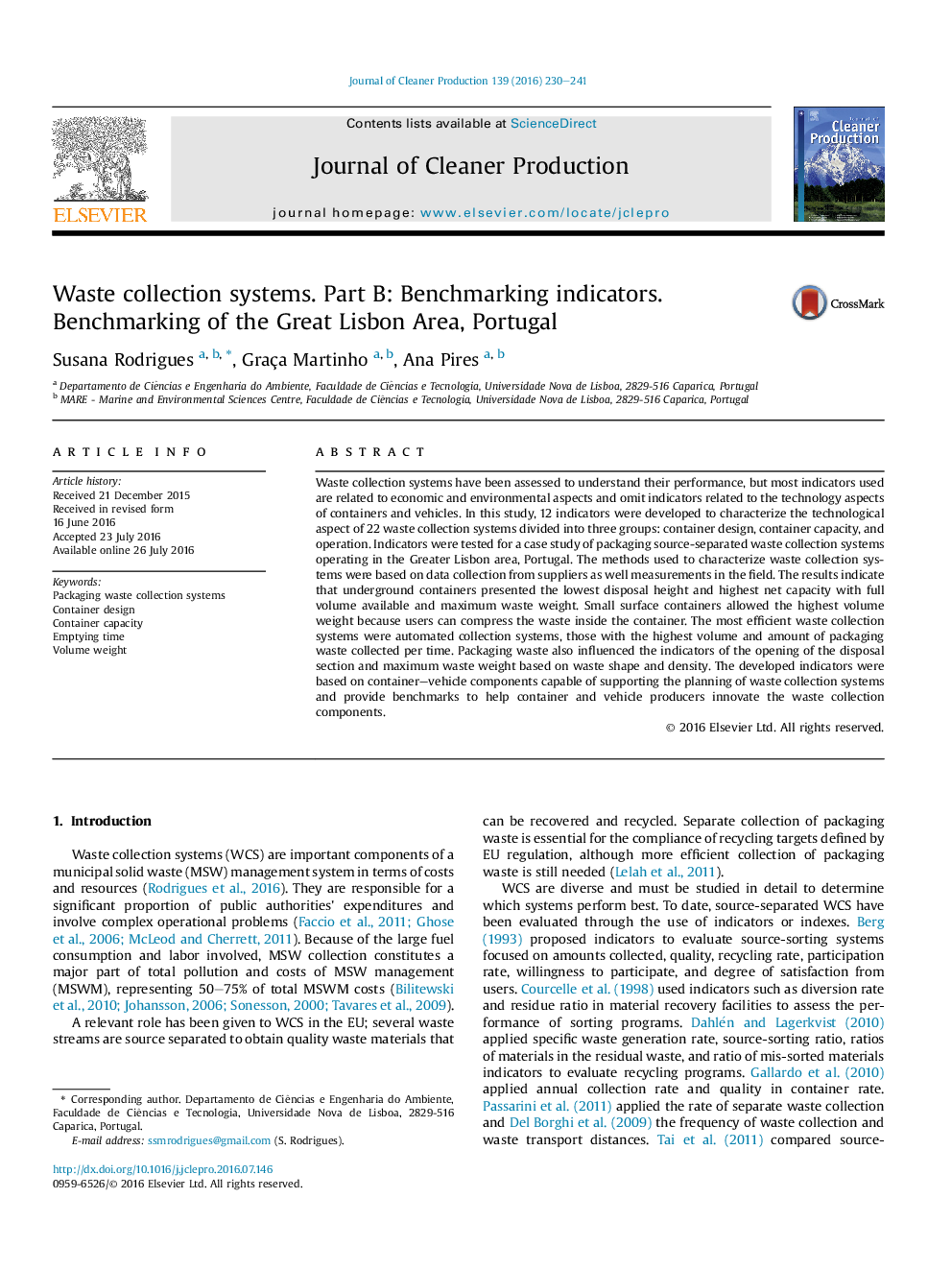| Article ID | Journal | Published Year | Pages | File Type |
|---|---|---|---|---|
| 8100519 | Journal of Cleaner Production | 2016 | 12 Pages |
Abstract
Waste collection systems have been assessed to understand their performance, but most indicators used are related to economic and environmental aspects and omit indicators related to the technology aspects of containers and vehicles. In this study, 12 indicators were developed to characterize the technological aspect of 22 waste collection systems divided into three groups: container design, container capacity, and operation. Indicators were tested for a case study of packaging source-separated waste collection systems operating in the Greater Lisbon area, Portugal. The methods used to characterize waste collection systems were based on data collection from suppliers as well measurements in the field. The results indicate that underground containers presented the lowest disposal height and highest net capacity with full volume available and maximum waste weight. Small surface containers allowed the highest volume weight because users can compress the waste inside the container. The most efficient waste collection systems were automated collection systems, those with the highest volume and amount of packaging waste collected per time. Packaging waste also influenced the indicators of the opening of the disposal section and maximum waste weight based on waste shape and density. The developed indicators were based on container-vehicle components capable of supporting the planning of waste collection systems and provide benchmarks to help container and vehicle producers innovate the waste collection components.
Keywords
Related Topics
Physical Sciences and Engineering
Energy
Renewable Energy, Sustainability and the Environment
Authors
Susana Rodrigues, Graça Martinho, Ana Pires,
